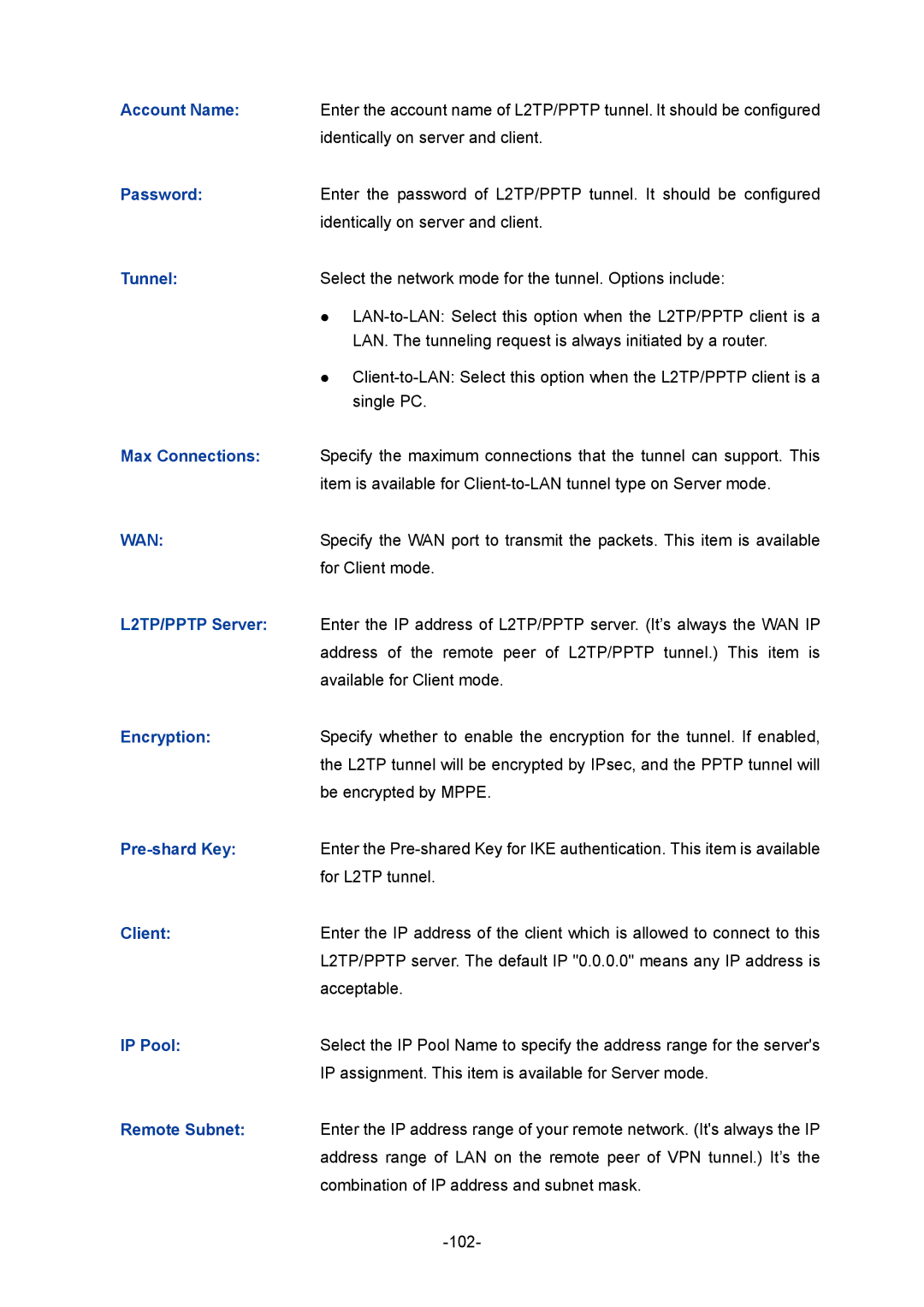Account Name: | Enter the account name of L2TP/PPTP tunnel. It should be configured |
| identically on server and client. |
Password: | Enter the password of L2TP/PPTP tunnel. It should be configured |
| identically on server and client. |
Tunnel: | Select the network mode for the tunnel. Options include: |
| |
| LAN. The tunneling request is always initiated by a router. |
| |
| single PC. |
Max Connections: | Specify the maximum connections that the tunnel can support. This |
| item is available for |
WAN: | Specify the WAN port to transmit the packets. This item is available |
| for Client mode. |
L2TP/PPTP Server: | Enter the IP address of L2TP/PPTP server. (It’s always the WAN IP |
| address of the remote peer of L2TP/PPTP tunnel.) This item is |
| available for Client mode. |
Encryption: | Specify whether to enable the encryption for the tunnel. If enabled, |
| the L2TP tunnel will be encrypted by IPsec, and the PPTP tunnel will |
| be encrypted by MPPE. |
| Enter the |
| for L2TP tunnel. |
Client: | Enter the IP address of the client which is allowed to connect to this |
| L2TP/PPTP server. The default IP "0.0.0.0" means any IP address is |
| acceptable. |
IP Pool: | Select the IP Pool Name to specify the address range for the server's |
| IP assignment. This item is available for Server mode. |
Remote Subnet: | Enter the IP address range of your remote network. (It's always the IP |
| address range of LAN on the remote peer of VPN tunnel.) It’s the |
| combination of IP address and subnet mask. |
|
Page 107
Image 107
